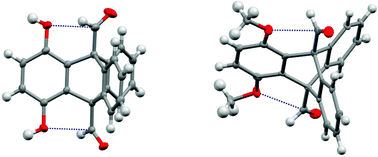The Royal Swedish Academy of Sciences has awarded the Nobel Prize in Chemistry for 2011 to Dan Shechtman from Technion – Israel Institute of Technology, Haifa, Israel “for the discovery of quasicrystals”. His discovery of a ten-fold diffraction pattern from the rapidly cooled alloys of Al with 10—14 at. % Mn, Fe, or Cr in 1982 fundamentally altered how scientists conceive of solid matter. At first Shechtman didn’t believe the atoms in his crystal were packed in a pattern that could not be repeated, as aperiodicity was forbidden. However he realised that the image he saw in his electron microscope was correct and what he had learnt was wrong, standing by his very controversial discovery to the point of being asked to leave his research group.
In 1984, along with Ilan Blech, John Cahn, and Denias Gratia, Shechtman finally had the opportunity to publish his data, reporting a crystal with “long-range orientational order, but with icosahedral point group symmetry, which is inconsistent with lattice translations. Its diffraction spots are as sharp as those of crystals but cannot be indexed to any Bravais lattice”,1 which would eventually be known as a quasicrystal. Through the application of Alan Mackay’s model for aperiodic diffraction patterns of atoms to Shechtman’s data by the physicists Paul Steinhardt and Dov Levine, it was discovered that Mackay’s theoretical tenfold symmetry actually existed in Shechtman’s diffraction pattern.2 Today quasicrystals constitute an entire area of science by themselves, spanning chemistry, physics, materials science and mathematics.
These perfectly ordered materials that never repeat themselves are mostly produced artificially in laboratory environments. The 1st naturally occurring quasicrystals were recently discovered in the mineral icosahedrite (Al63Cu24Fe13) from the Khatyrka River in Russia,3 and a Swedish company has also found quasicrystals in a certain form of steel. Whilst the idea of quasicrystals was completely novel, 2D aperiodic patterns had been identified in many old Arabic murals from the 13th century onwards, and also in Penrose tiles in the 1970s, where regular patterns never repeat themselves. By transcribing this aperiodicity to three dimensions, Shechtman instigated a paradigm shift in materials chemistry that forced scientists to reconsider their perception of the very nature of matter.
“the world was completely unprepared for the discovery of Dan Shechtman that such aperiodic beasts could actually exist also in solid matter.”
Sven Lidin – Member of the Nobel Committee for Chemistry 2011
1. Metallic Phase with Long-Range Orientational Order and No Translational Symmetry
Dan Shechtman, Ilan Blech, Denias Gratias, and John W. Cahn
Phys. Rev. Lett., 1984, 53, 1951–1953
2. Quasicrystals: A New Class of Ordered Structures
Dov Levine and Paul J. Steinhardt
Phys. Rev. Lett., 1984, 53, 2477–2480
3. Icosahedrite, Al63Cu24Fe13, the first natural quasicrystal
Luca Bindi, Paul J. Steinhardt, Nan Yao, and Peter J. Lu
Am. Mineral., 2011, 96, 928–931
 In this CrystEngComm Hot article William Ducker from the University of Melbourne studies the mechanism for hydrothermal growth of ZnO, in collaboration with Virginia Polytechnic Institute and State University.
In this CrystEngComm Hot article William Ducker from the University of Melbourne studies the mechanism for hydrothermal growth of ZnO, in collaboration with Virginia Polytechnic Institute and State University.










 The outside cover features research by Yang et al. Highly symmetric polyhedral 50-facet Cu2O homogeneous structures enclosed by 24 high-index {211} facets, and 8 low-index {111} facets, 6 low-index {100} facets and 12 low-index {110} facets have been synthesized via a facile seed-mediated solution phase route.
The outside cover features research by Yang et al. Highly symmetric polyhedral 50-facet Cu2O homogeneous structures enclosed by 24 high-index {211} facets, and 8 low-index {111} facets, 6 low-index {100} facets and 12 low-index {110} facets have been synthesized via a facile seed-mediated solution phase route. John D. Wallis and colleagues at Nottingham Trent University, the University of Southampton, Brock University and the University of Fribourg look at the (1,5) interactions between aldehyde groups and hydroxyl or methoxy groups in this CrystEngComm Hot article.
John D. Wallis and colleagues at Nottingham Trent University, the University of Southampton, Brock University and the University of Fribourg look at the (1,5) interactions between aldehyde groups and hydroxyl or methoxy groups in this CrystEngComm Hot article.